Discover the quirks of some of McMaster’s oldest and newest buildings
When McMaster’s Hamilton campus first opened its doors in 1930, it consisted of five buildings: University Hall, Hamilton Hall, Wallingford Hall, Edwards Hall, and the Refectory. These buildings were designed in the Collegiate Gothic style and inspired by universities such as Oxford and Cambridge.
The ornamental stonework featured on University Hall and Hamilton Hall is typical of the Gothic architectural style. These two buildings were designed by architect William Lyon Somerville. The carvings above the University Hall Arch (pictured) depict students wearing graduation caps.
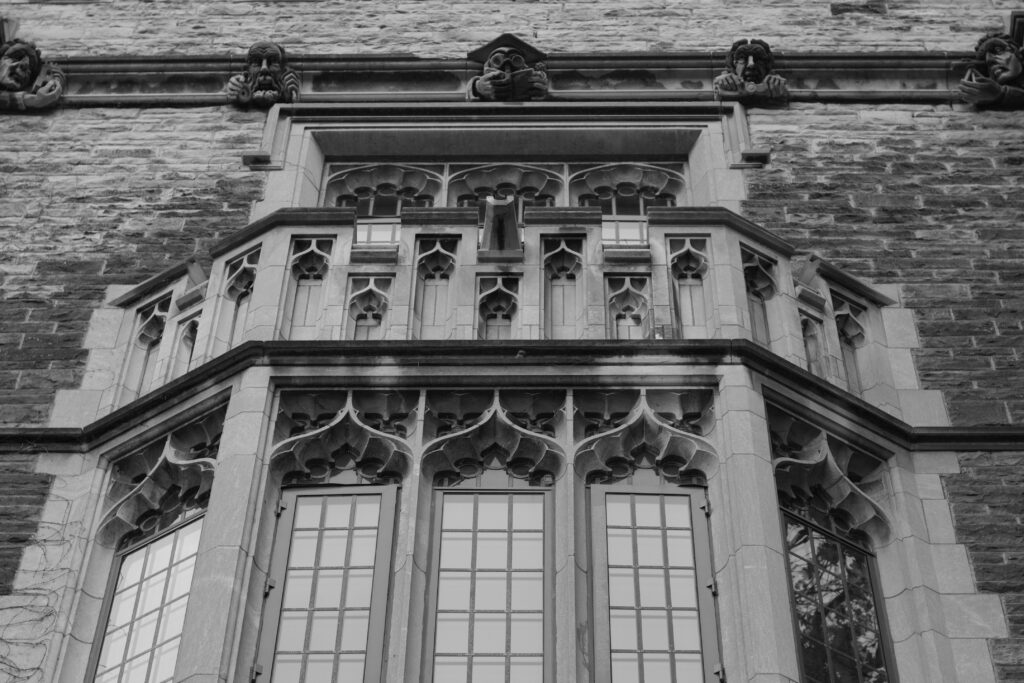
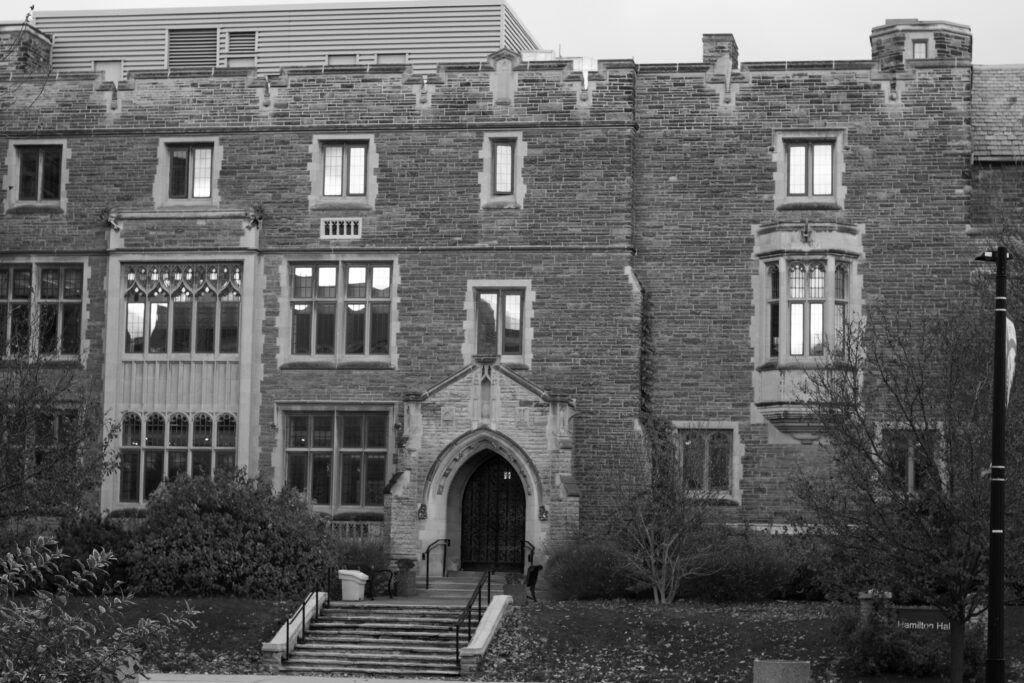
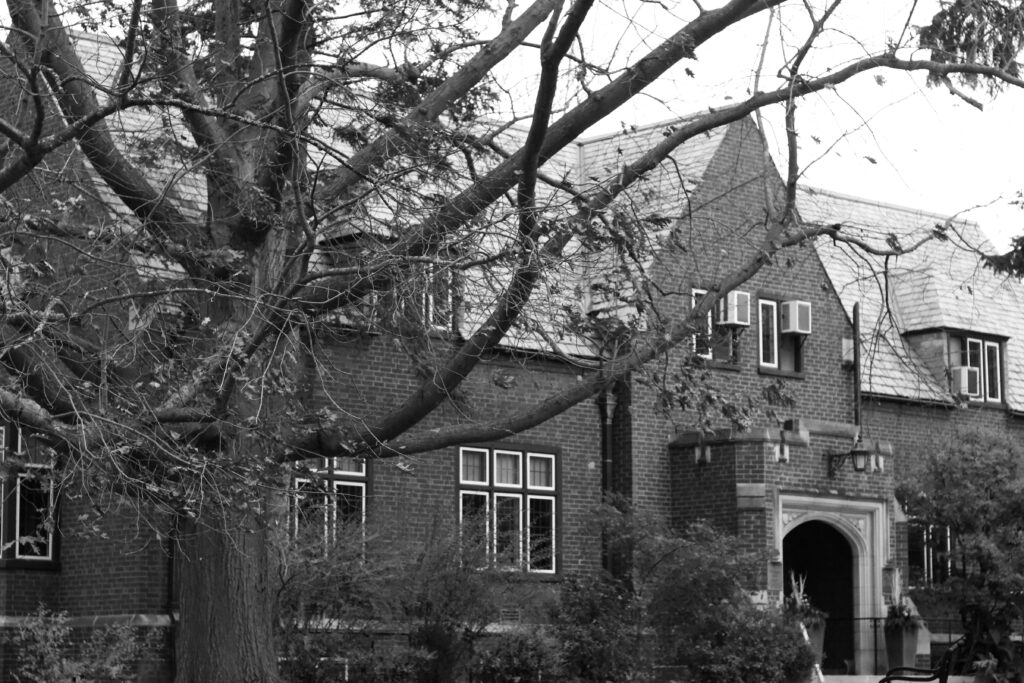
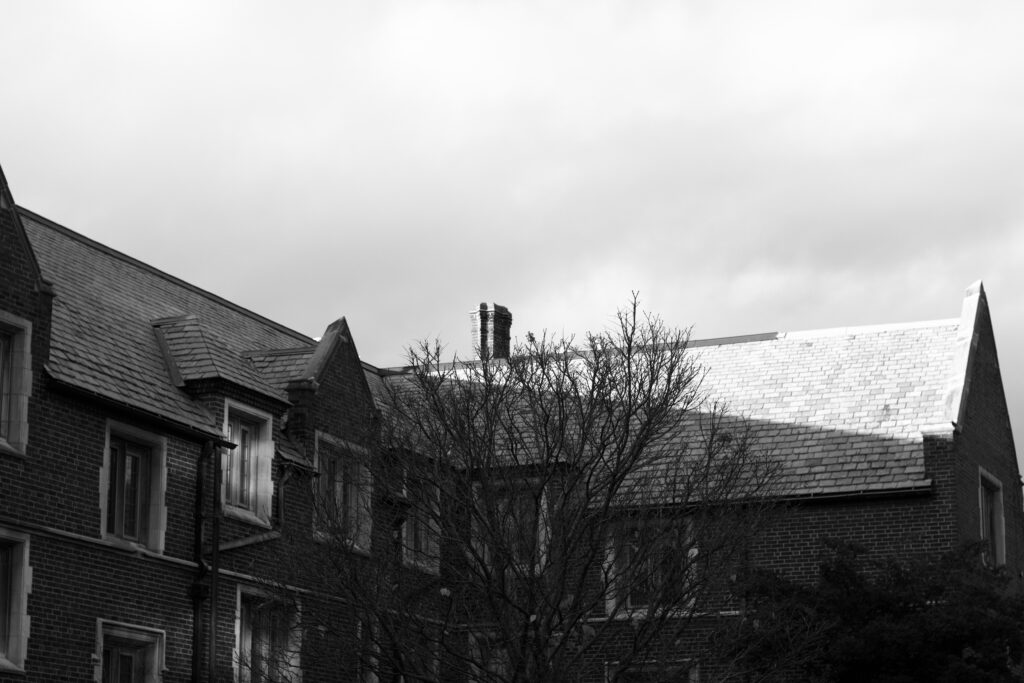
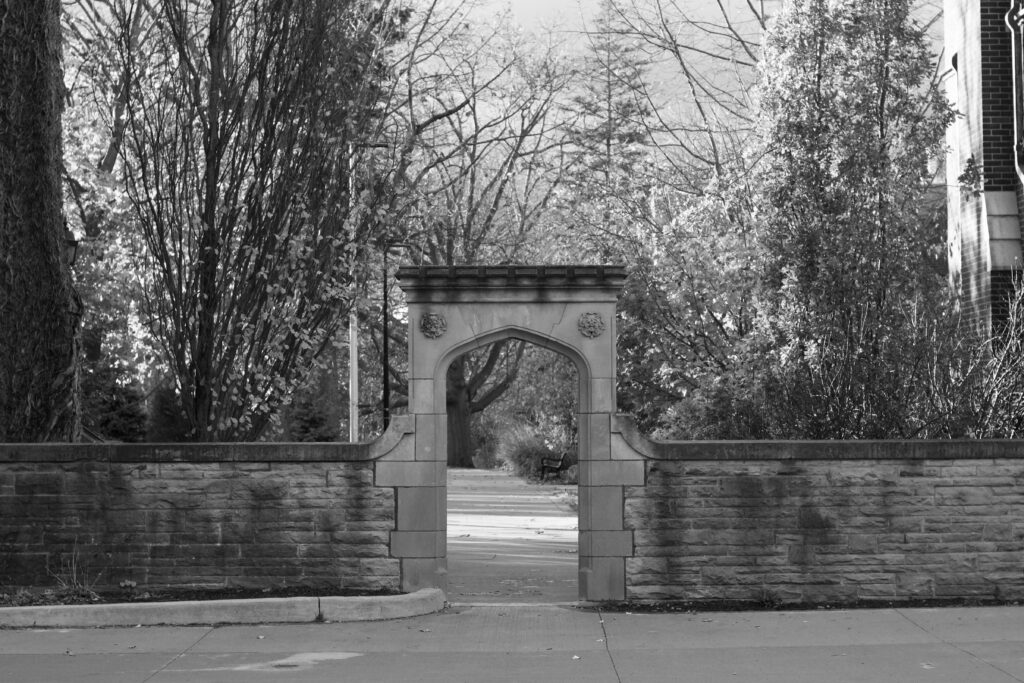
The McMaster Health Sciences Centre was designed by architect Eberhart Zeigler, with the intention of “never being finished.” The interior of the building was designed without the need for structural support walls, allowing for future modification.
This building was designed in the Brutalist architecture style that emerged in the mid-1900s and first opened in 1972.
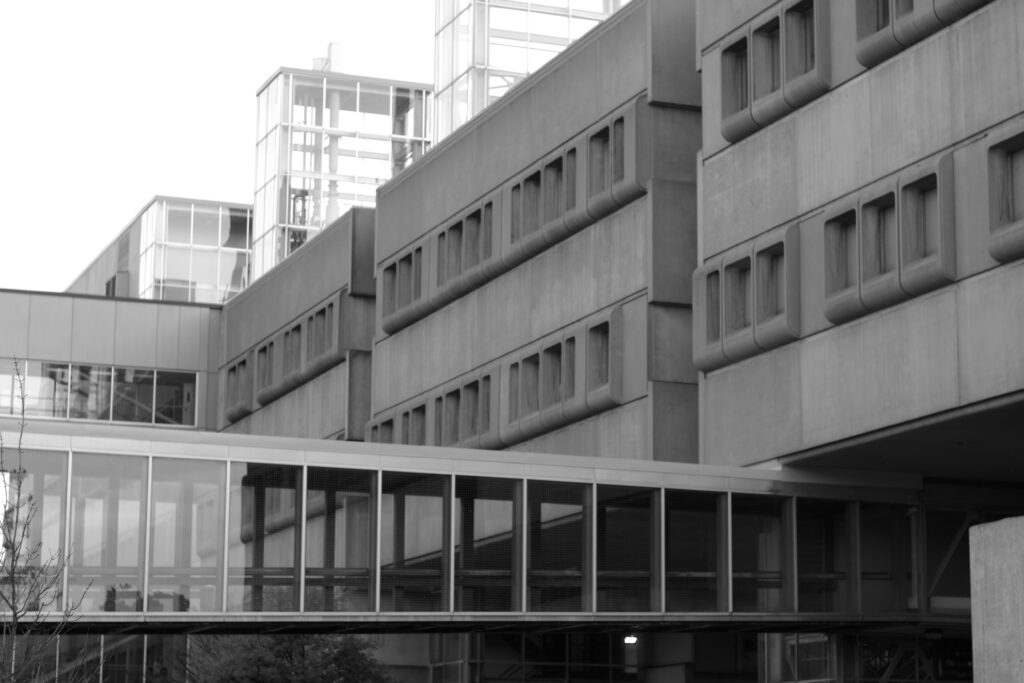
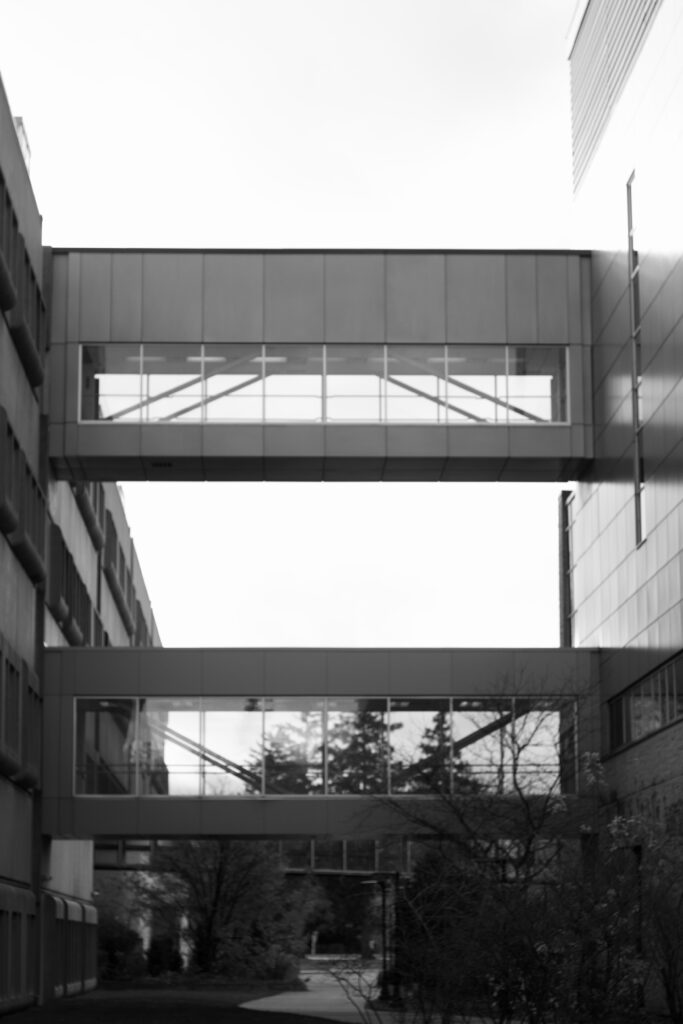
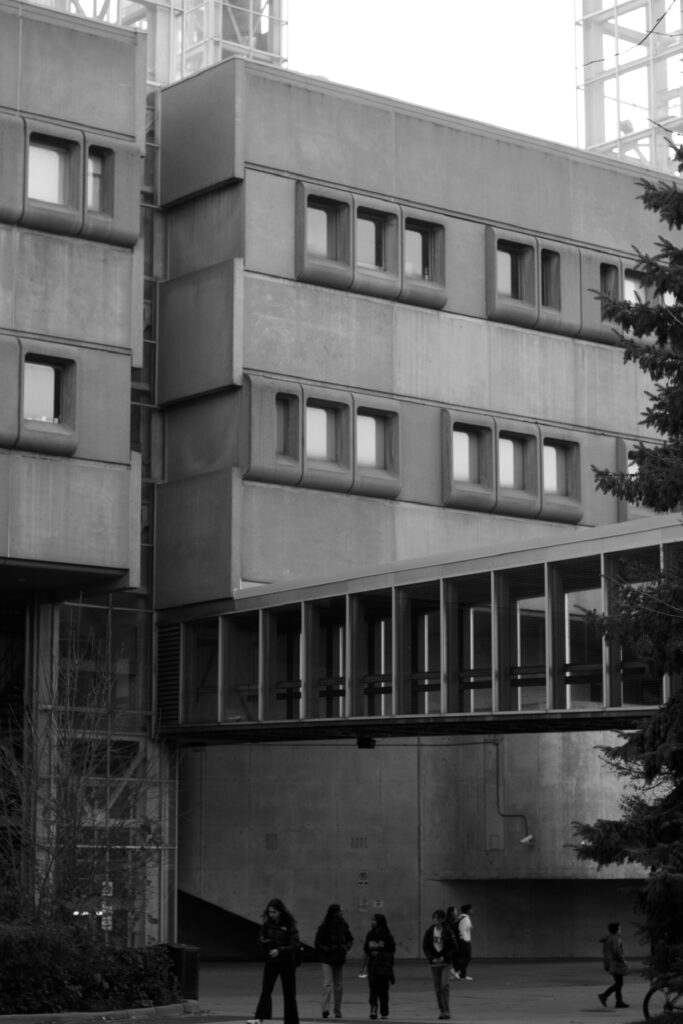
Among McMaster’s newest buildings are The Hub (2024), the Peter George Centre for Living and Learning (2019), and L. R. Wilson Hall (2017). L. R. Wilson Hall features a concert hall, blackbox theatre, interactive classrooms and an inner courtyard (pictured). The Peter George Centre was designed by architecture firm Diamond Schmitt. The four-storey atrium is naturally lit by a skylight and features a spiral staircase.
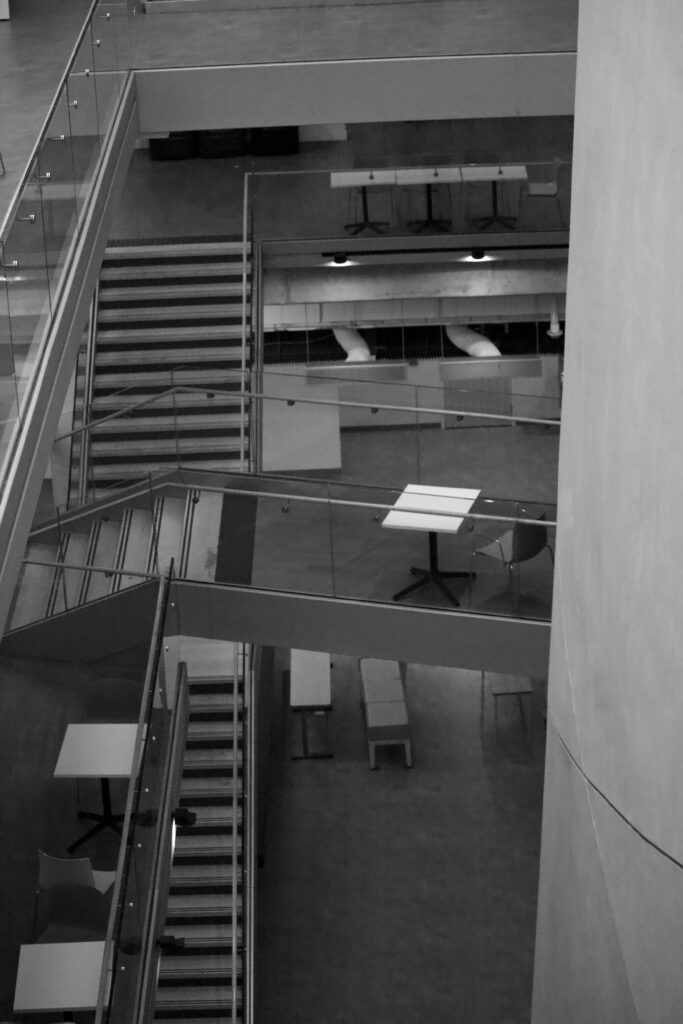
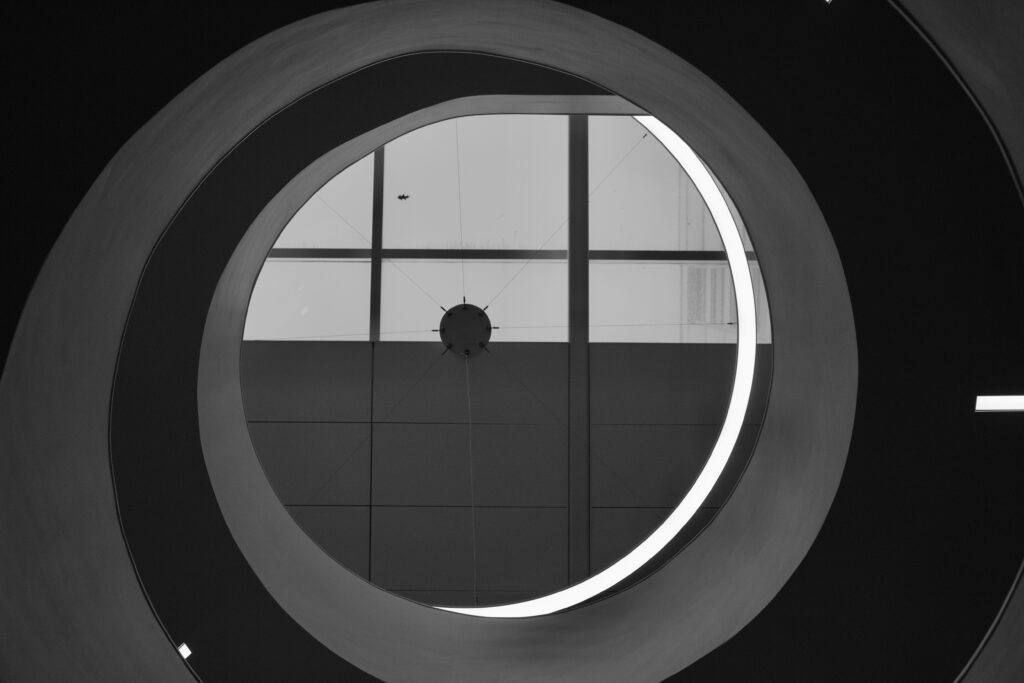
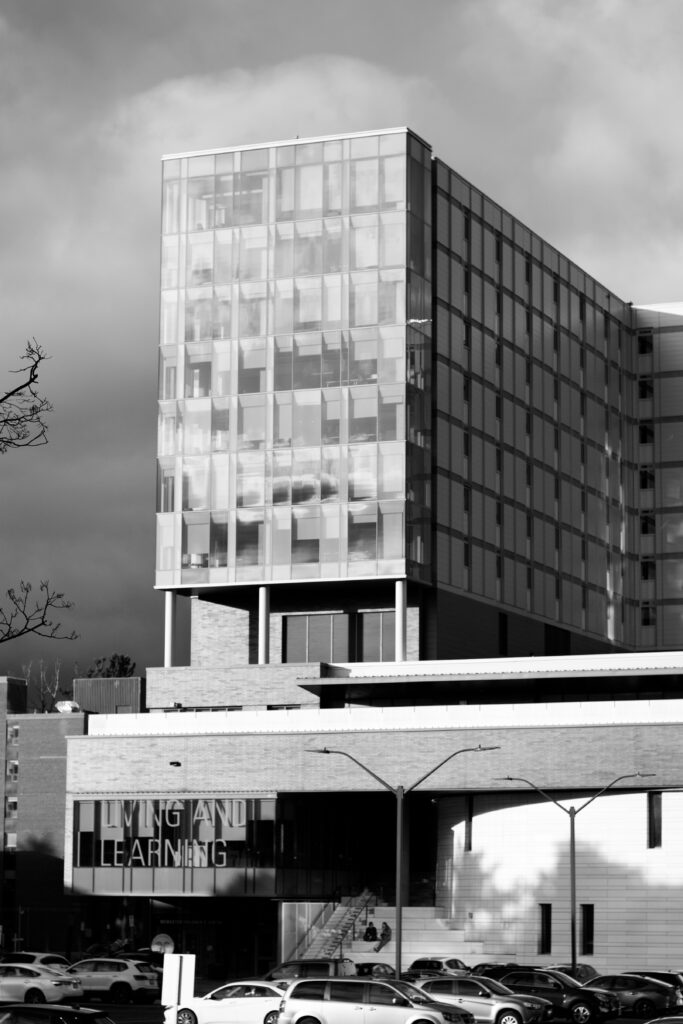
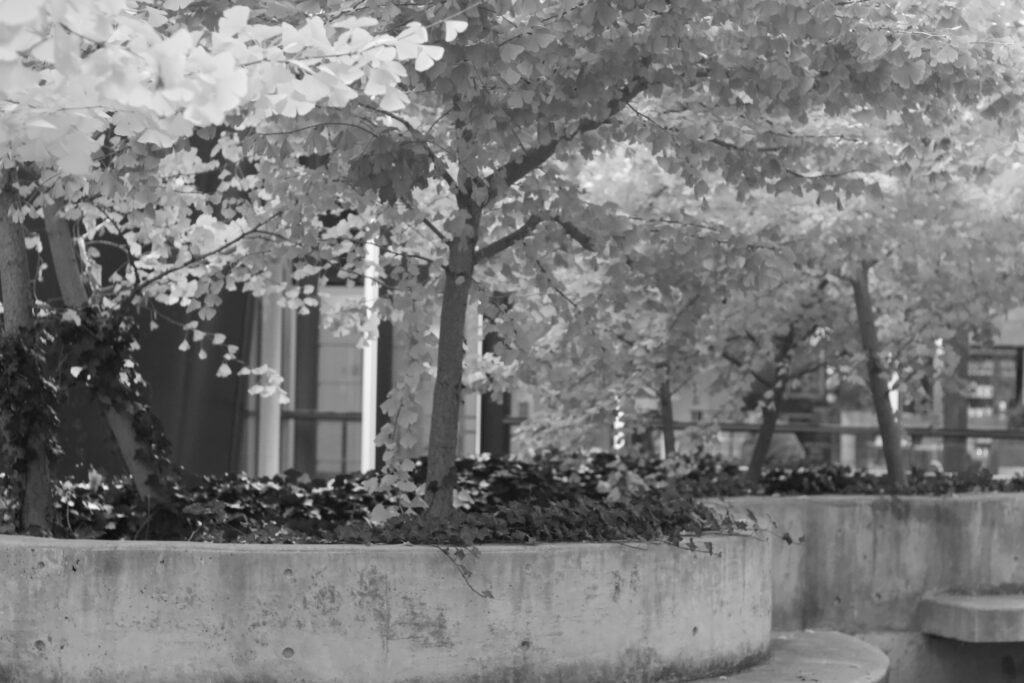
The MSU makes Bounce Life its centralized management platform for campus events and club activities
The McMaster Students Union has teamed up with Bounce Life to streamline event management and boost student engagement on campus. Announced on Instagram on July 29, Bounce will be the official community and events platform for the MSU and its affiliated organizations and student clubs.
The platform will serve as centralized hub, simplifying event planning for campus services and student clubs.
In an interview with The Silhouette, MSU president Jovan Popovic detailed the platform's benefits and its prospective impact on students.
“It’s about transparency … showing people everything that’s going on, connecting people, showing you which of your friends are going to certain events. There’s a lot of nifty features where I think people can see the best of what’s happening on campus … and connect them better than any other platform that we currently have,” Popovic said.
It’s about transparency … showing people everything that’s going on, connecting people, showing you which of your friends are going to certain events. There’s a lot of nifty features where I think people can see the best of what’s happening on campus … and connect them better than any other platform that we currently have.
Jovan Popovic
President, McMaster Students Union
Bounce, accessible via a mobile app, offers robust event management tools and features to make make event organizing streamlined and to increase engagement. Most important to the MSU, its services and student clubs is that users can host and manage event listings, track attendance, communicate with participants, and offer real-time updates during events.
One key feature is that it handles ticketing and paid events. Before, student clubs would have to choose their own service, such as Eventbrite, to sell tickets and collect fares.
Other notable features include an invite back option for re-inviting previous attendees and free SMS blasts for event-day communication.
Popovic explained that other universities, including the University of British Columbia and Western University, have already chosen Bounce as their event management system for student organizations.
"It’s a relatively newer product, but it’s being rapidly adopted. UBC and Western have integrated it, and many larger student unions across the country are taking a serious look at it. We all share the same vision of unity, connection, and belonging,” said Popovic.
It’s a relatively newer product, but it’s being rapidly adopted. UBC and Western have integrated it, and many larger student unions across the country are taking a serious look at it. We all share the same vision of unity, connection, and belonging.
Jovan Popovic, President
McMaster Students Union
The rollout of Bounce is ongoing and the first MSU events of the school year are now listed on the platform. Tickets for the upcoming homecoming concert with Loud Luxury and Lil Tecca became available on Bounce on August 30.
Popovic mentioned that him and his team promoted the app during welcome week, offering incentives such as free items to encourage sign-ups. “Now it’s about seeing how students experience it and letting them use it. We’re at the stage where we can start communicating with them through the app and posting our events,” said Popovic.
Popovic noted that with the usage of Bounce, he hopes to see more event attendance and engagement. "We've seen a significant boost in the number and quality of events on campus and I think a lot of that will be reflected on Bounce. Bounce will help us raise awareness. Once students attend our events, it's easier to keep them coming back," he said.
Students can access Bounce by downloading the app and signing up with their university email. For updates on campus events, follow the MSU and @bouncelifemac on Instagram.
By Donna Nadeem, Contributor
Cootes Paradise surrounds McMaster University’s campus, creating a warm, natural environment at Mac. At the Art Gallery of Hamilton (123 King St. West) and within the heart of the Jean and Ross Fischer Gallery, a collection of various works comes together to express the impact that Cootes has had on Hamilton — spanning the past, present and (hopefully) the future.
From paintings of the beautiful landscape contained in Cootes Paradise, to photographs of the life that resides within and maps documenting the area, “Cootes Paradise: A Place Above All Others” reveals the importance of this wetland. The works emphasize that if we don’t take care of Cootes, then we are going to lose it.
The exhibition is a collaboration between the Royal Botanical Gardens, Dundas Museum and Archives, Hamilton Public Library and the Art Gallery of Hamilton. It celebrates the centennial of the Hamilton Naturalists Club, discusses sustainability within Cootes Paradise and reflects on stewardship of the land. There is a focus on the human connection to the land and biodiversity.

Cootes Paradise has had a long past. Its usage claims were constantly debated in where a by developers and entrepreneurs. However, local bird watchers saw the threat looming. They began fundraising to preserve the wetlands as a natural habitat.
“Everyone had a different notion of what they wanted to do with this area, they wanted to live in it, hunt in it, they wanted to commercially develop it and this has been its fate,” said Tor Lukasik-Foss, director of programs and education at the Art Gallery of Hamilton.
Robert Ross is one of the artists who has contributed to this exhibition. Ross has been viewed has one of Hamilton’s most successful artists and considered a master of realism painting. The artist has focused much of his work on Cootes and Dundas Valley, detailing how the land has changed throughout time. This artwork, combined with maps and aerial photography provided by the Hamilton Public Library, effectively helps viewers understand how history has taken its toll on Cootes Paradise.

The Hamilton Naturalists Club asked its members to share their photos of the area, specifically of the birds that live and dwell within the trees. Reaching out to amateur photographers within their membership, they curated 40 photos of Cootes’ long-term residents.
The Hamilton Naturalists Club have been at the forefront of annual bird counts and record-keeping for bird activity in the area since 1927. Thanks to this, they have the most complete record of bird activity anywhere in North America.
“Even though we look at nature and think that this is a place where humans don’t reside, it's not really true, we are there whether nature wants us there or not, for the sake of its continuance we have to be there, so there’s this rich human culture that abounds beyond,” said Lukasik-Foss.
Naturally, as McMaster University overlooks the grounds of Cootes Paradise, a new course was created to explore the area. “Designing Paradise” will run during the Winter 2020 term. It will explore eco-concepts and re-define McMaster’s campus as an environmentally sustainable space. The course will be led by professors Judy Major-Giradin and Daniel Coleman.
“I love that through this course we can engage with the historical and political elements that still reside in the Hamilton landscape, but also have the chance to artistically explore the natural environment and reimagine west campus as the diverse ecosystem that it once was,” said Mariana Quinn, a 3rd year Studio Arts student who is enrolled in the ART 3DP3 Designing Paradise course.

Both Major-Giradin and Coleman are focused on sustainability. Major-Girardin is a Studio Arts professor that actively seeks methods in her studio practice that can provide and offer more environmentally responsible approaches. Coleman is an English professor who recently published a book called Yardwork in 2017 that analyzes Hamilton through ecological, cultural and political stories as well as builds awareness for the sacred land where he resides.
“These spaces, they are not untouched by humans, they are massively touched by humans, in fact, the only way that they live now is because of human advocacy and human action, so they are as talked about and combed over as any other urban space in a lot of ways,” said Lukasik-Foss.
“Cootes Paradise: A Place Above All Others” is a tremendous effort by members of the city to teach it’s residents that even though we live in a densely populated city, we have beautifully vibrant natural spaces. With these spaces; however, comes environmental issues that we need to get behind in to preserve our nature.
“Cootes Paradise: A Place Above All Others” is on display until Dec. 1 at the Art Gallery of Hamilton (123 King St. West). The exhibition is free to all McMaster students with a valid student card.
[thesil_related_posts_sc]Related Posts[/thesil_related_posts_sc]